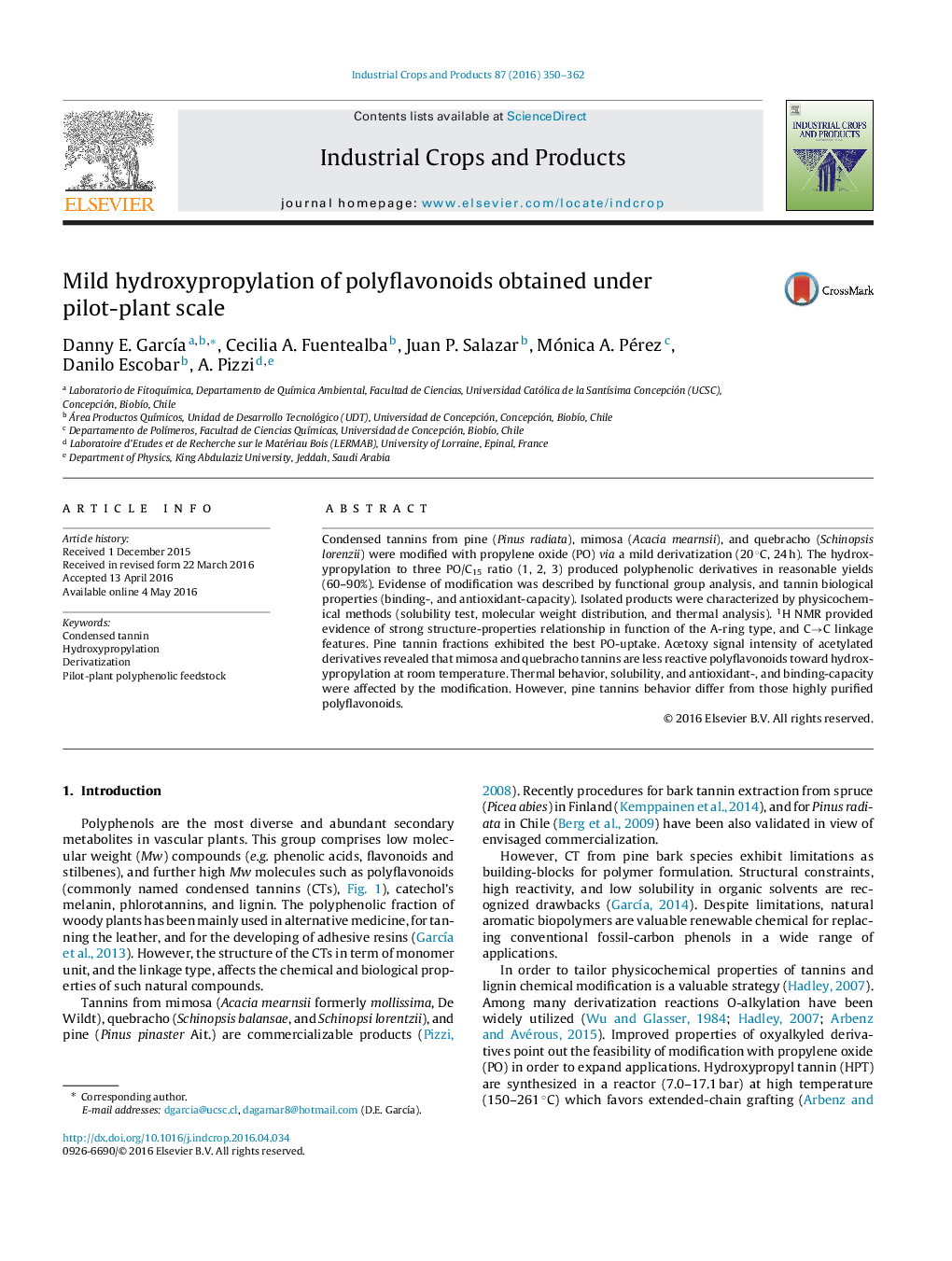| Article ID | Journal | Published Year | Pages | File Type |
|---|---|---|---|---|
| 4512257 | Industrial Crops and Products | 2016 | 13 Pages |
•Hydroxypropyl derivatives from several poly-flavonoids sources were synthesized at room temperature.•A strong structure-properties relationship was established based on functional group analysis and spectroscopic methods.•C → C linkage, and A-ring type affect dramatically the poly-flavonoid reactivity with propylene oxide at 20 °C.•Physicochemical properties of pilot-plant Pinus radiata tannin derivatives highly differ from those obtained for alternative purification processes.
Condensed tannins from pine (Pinus radiata), mimosa (Acacia mearnsii), and quebracho (Schinopsis lorenzii) were modified with propylene oxide (PO) via a mild derivatization (20 °C, 24 h). The hydroxypropylation to three PO/C15 ratio (1, 2, 3) produced polyphenolic derivatives in reasonable yields (60–90%). Evidense of modification was described by functional group analysis, and tannin biological properties (binding-, and antioxidant-capacity). Isolated products were characterized by physicochemical methods (solubility test, molecular weight distribution, and thermal analysis). 1H NMR provided evidence of strong structure-properties relationship in function of the A-ring type, and C→C linkage features. Pine tannin fractions exhibited the best PO-uptake. Acetoxy signal intensity of acetylated derivatives revealed that mimosa and quebracho tannins are less reactive polyflavonoids toward hydroxypropylation at room temperature. Thermal behavior, solubility, and antioxidant-, and binding-capacity were affected by the modification. However, pine tannins behavior differ from those highly purified polyflavonoids.
Graphical abstractFigure optionsDownload full-size imageDownload as PowerPoint slide
